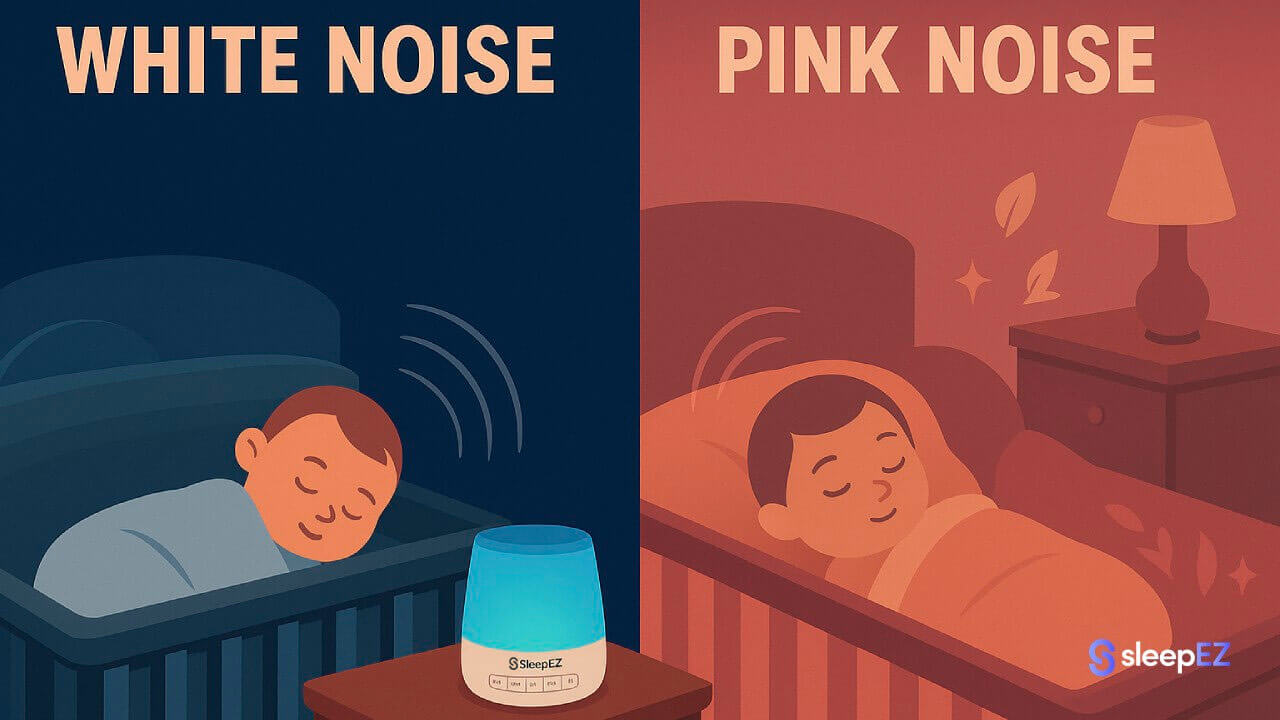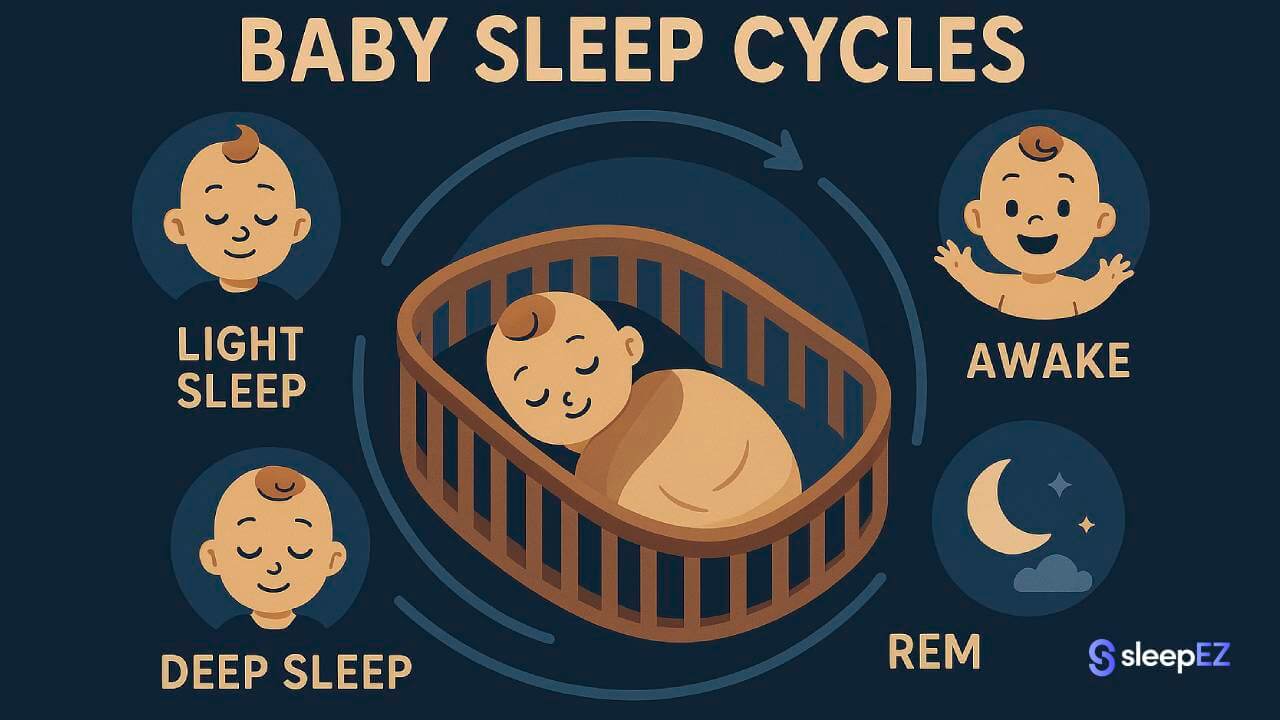You've heard that a sound machine can help your baby sleep. Great. But now you're staring at product pages that mention white noise, pink noise, and brown noise. What's the difference? Which one actually works?
This guide explains the difference simply and helps you decide which sound is best for your nursery.
What Are the "Colors" of Noise? (A Simple Guide)
The "colors" of noise describe how sound energy is distributed across different frequencies. Think of it like the difference between bass and treble on a speaker. Each color has a different mix.
What is White Noise?
White noise sounds like a hissing radiator, an untuned radio, or a vacuum cleaner.
It has equal power across all sound frequencies, from low rumbles to high pitches. This makes it sound sharp or "hissy" to most ears.
What is Pink Noise?
Pink noise sounds like steady rainfall or wind rustling through leaves.
It's white noise with more bass. The sound is louder at lower frequencies and softer at higher frequencies. This balance makes it sound flatter and less harsh than white noise.
What about Brown Noise?
Brown noise sounds like a deep river or a strong waterfall.
It's even deeper and more bass-heavy than pink noise. Some people find it calming, but it can be too low-pitched for masking household sounds.
What's Best for Your Baby's Sleep?
Both sounds can help babies sleep, but they work differently.
The Case for White Noise
White noise covers all frequencies equally. This makes it excellent at masking sudden, external noises like a dog barking, a door slamming, or a truck passing by. It creates a consistent wall of sound that drowns out disruptions.
If you live in a noisy home or apartment, white noise does its job well.
The Case for Pink Noise
Pink noise has advantages that matter for infant sleep.
It's more balanced. The sharp hiss of white noise can be irritating over time. Pink noise has a softer, deeper quality that sounds more like the rhythmic shushing babies heard in the womb.
It promotes deeper sleep. Studies have shown that pink noise may help increase slow-wave sleep, the deepest and most restorative stage of sleep. This matters for babies who need quality rest to grow and develop.
The verdict: White noise is great for masking disruptive sounds. But for soothing a baby and promoting deep, restful sleep, pink noise is often the better choice.
How to Use a Sound Machine Safely for Your Baby
Safety comes first. The American Academy of Pediatrics (AAP) supports using sound machines if you follow these rules:
Keep the volume low. Keep it below 50 decibels, about the sound of a quiet dishwasher. Loud sound machines can damage your baby's hearing.
Keep it at a distance. Place the machine across the room from the crib, not right next to your baby's head. Distance reduces sound intensity naturally.
Don't run it 24/7. Use it during sleep periods (naps and nighttime) to help signal that it's time to rest. Turn it off when your baby is awake and playing so they can hear normal household sounds and develop language skills.
Read: White Noise Machine Baby
Our Recommendation: A Machine That Gives You Options
Here's the problem: some babies prefer the masking power of white noise, while others respond better to the depth of pink noise. You don't want to buy a machine and discover it has the wrong sound.
This is why a machine with multiple sound options is the smartest investment.
The Hush Light Sound Machine, for example, includes white noise, pink noise, and brown noise so you can find the exact tone that works best for your baby (or even for you). For a dedicated nursery option, the White Noise Machine Baby also provides these soothing sounds.
Conclusion: Find the Right Sound for Your Family
The "best" sound is the one your baby sleeps best with. Pink noise is a solid, evidence-backed place to start because of its soothing qualities and deep-sleep benefits.
By choosing a machine with multiple options, you'll be ready for anything. Test different sounds, watch how your baby responds, and adjust as needed. That's what good parenting looks like.




Leave a comment
This site is protected by hCaptcha and the hCaptcha Privacy Policy and Terms of Service apply.